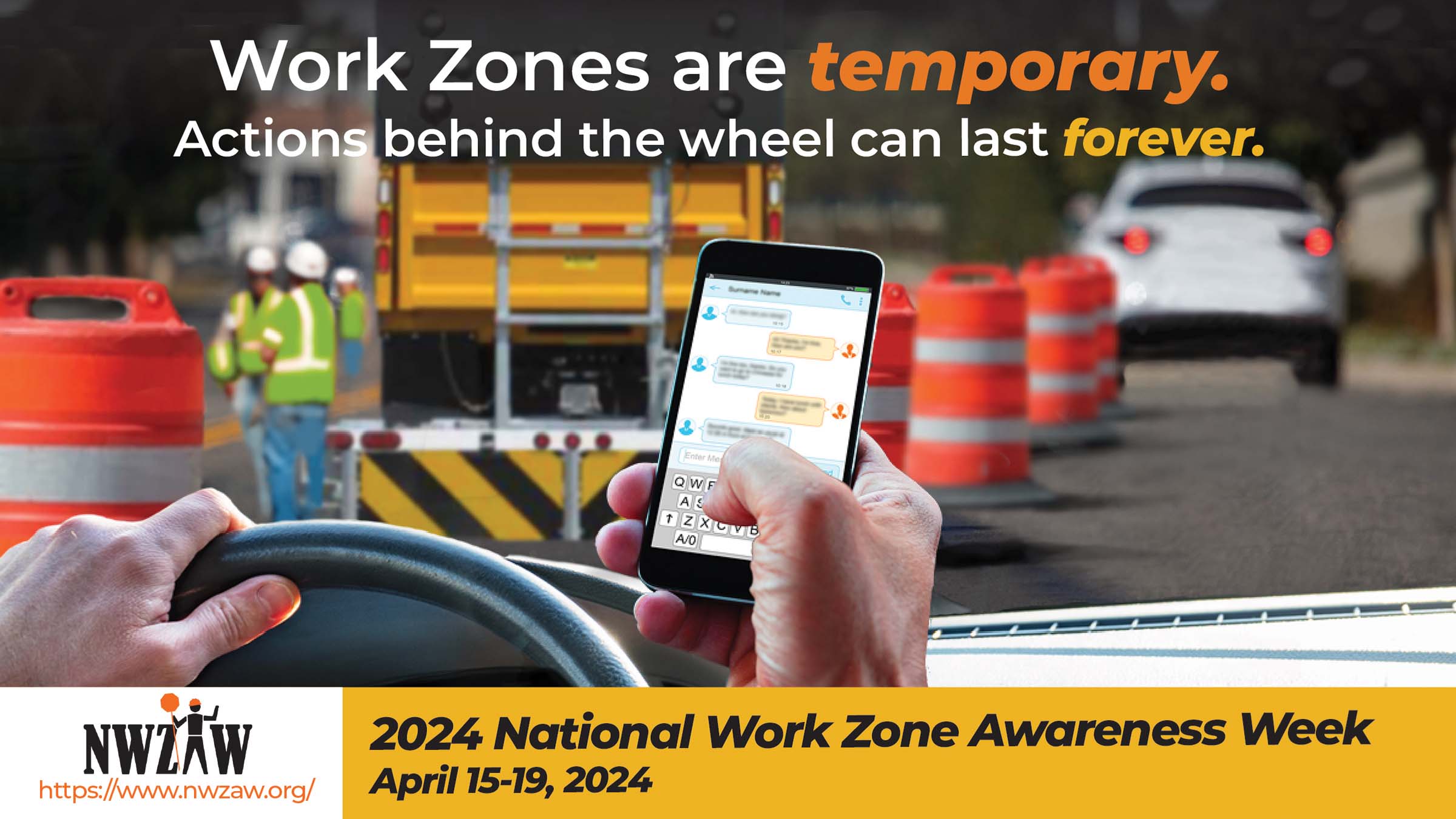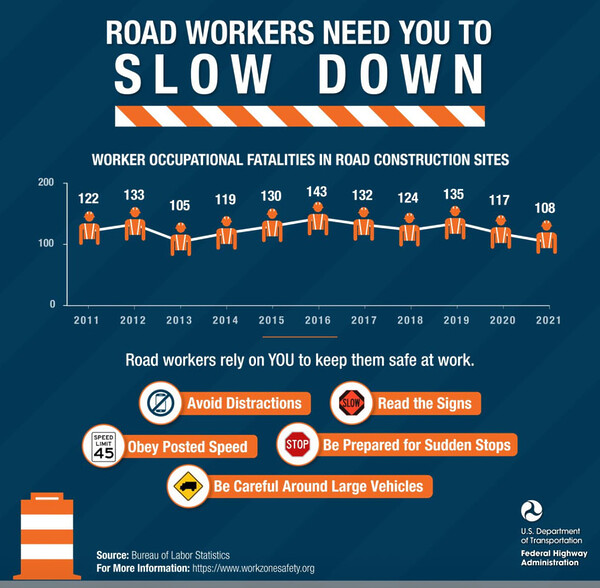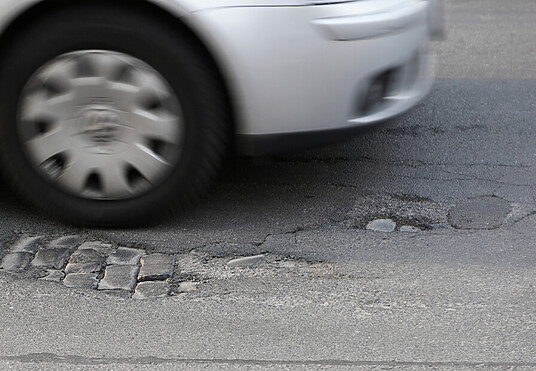It’s National Work Zone Safety Awareness Week

Along with springtime showers, April brings us National Work Zone Safety Awareness Week (NWZAW).
According to the NWZAW website, this week is “an annual spring campaign held at the start of construction season to encourage safe driving through highway work zones. The key message is for drivers to use extra caution in work zones.” The American Traffic Safety Services Association (ATSSA) oversees this annual, week-long campaign – NWZAW has successfully engaged with hundreds of companies and individuals each year it has been active. This year, the key phrase to focus on is “Work Zones are temporary. Actions behind the wheel can last forever”.
For 2024, NWZAW is April 15-19 (next week) and will be hosted by the Maryland Department of Transportation (MDOT).
Why do we need a week of awareness for work zone safety?
Roadside construction workers are among the vulnerable where accidents are concerned. Because they frequently work next to active driving lanes, their chance of being critically or fatally injured by a moving vehicle is high. Drivers nowadays have more safety features than ever, but they also have more potential distractions. These distractions, as well as things out of the drivers’ control (in some cases), can lead to loss of vehicle control, collisions, and struck-by injuries of workers, to name a few. This makes awareness of work zone safety that much more important: remaining aware and cautious in work zones can literally save lives.
How can you help keep work zones safer?
National Work Zone Safety Awareness Week is intended to help drivers make better choices when driving in highway work zones. Follow these tips to ensure you navigate work zones as safely as possible.
Number one: slow down!
One of the most crucial contributors to safer work zones is the speed of your vehicle. Work areas have reduced speeds for a reason: to ensure that you are aware of signage, barricades, and potential hazards as you drive through. Driving at the posted speeds allows you to take in your surroundings better, making you less likely to miss those key indicators of an active work zone.
Number two: “It can wait”!
If you haven’t done it before you’ve left your parking spot, it can wait until you’ve reached your destination! This includes using electronic devices in any manner (a phone call, texting, changing the music, etc), eating or drinking, focusing on passengers, and more. If it’s truly urgent, it’s best to pull over in a safe area, away from busy traffic. If you’re in a work zone, you might have to wait until you’ve exited the area to pull over safely.
Number three: stay focused!
Connected to the prior concepts of “slowing down” and “waiting until you reach your destination to fiddle with the car controls or use your electronic device”, comes our third tip for helping keep work zones safer – staying focused while driving. When operating a motor vehicle, you have one job: drive the vehicle safely.
The number of fatalities of drivers and their passengers was at a 17-year high in 2021: 778 individuals died in work zones (FARS data, NHTSA). This number does not include the 108 workers who perished in vehicle collisions either; the total of work zone fatalities for 2021 was 956 individuals, including pedestrians (workers). While workers are the most vulnerable in the case of a collision, they are not the only ones impacted. Barricades, signage, and flaggers are all safety measures designed to keep both drivers and workers safe in active work areas.
When you’re focused on one thing at a time, you can dedicate your full attention to it. Paying close attention to the safety measures and hazard indicators outside your car helps keep you and the people around you safe.

Keeping work zones safe: avoiding struck-by injuries
According to the Center for Construction: Research and Training, struck by incidents are the second leading cause of death for construction workers. A struck-by injury occurs when a person is struck by a vehicle, object, or equipment. While many do happen directly onsite because of heavy equipment, external motor vehicles do contribute to the overall number of incidents. As a driver, your best practice in preventing struck-by incidents is following the tips above: slow down, avoid distractions, and stay focused while on the road.
In the construction world, “safety stand-down” describes when normal work is paused at a site and everybody present focuses on a specific safety issue. This year, the National Stand-down to Prevent Struck-by Incidents is taking place in conjunction with NWZAW. Workers who participate will be educated on hazard prevention and how they can help prevent struck-by incidents at their job sites during the week of April 15-19.
Be a part of the change: make work zone safety a priority.
It takes one small step at a time to make big changes. Be a part of the solution – drive safely through work zones by paying close attention to the road, driving the posted speed limit, and being present and aware.
Want to participate in National Work Zone Safety Awareness Week?
Find out how, and follow along with our socials April 15-19.
“Work zones are temporary. Actions behind the wheel can last forever.”


